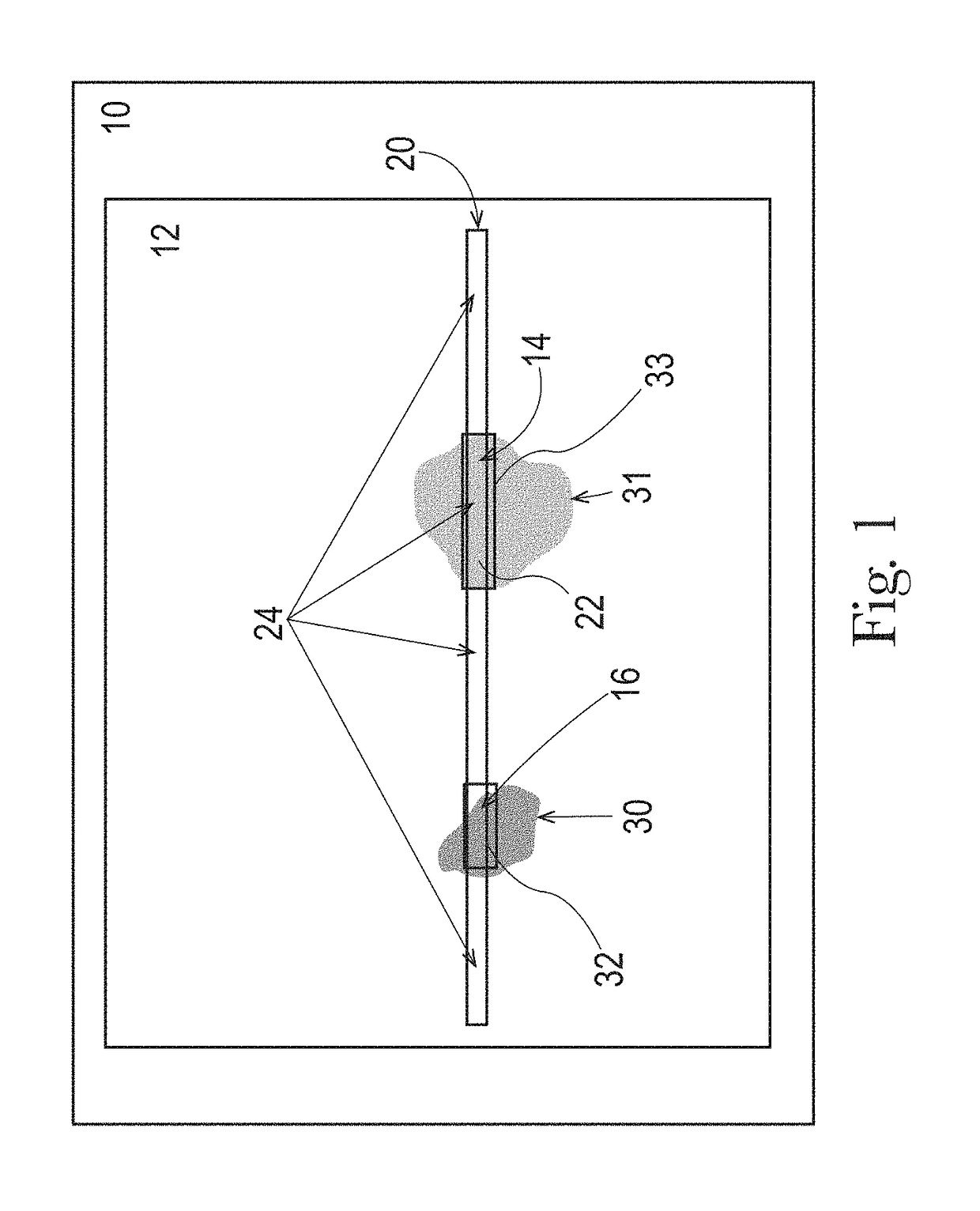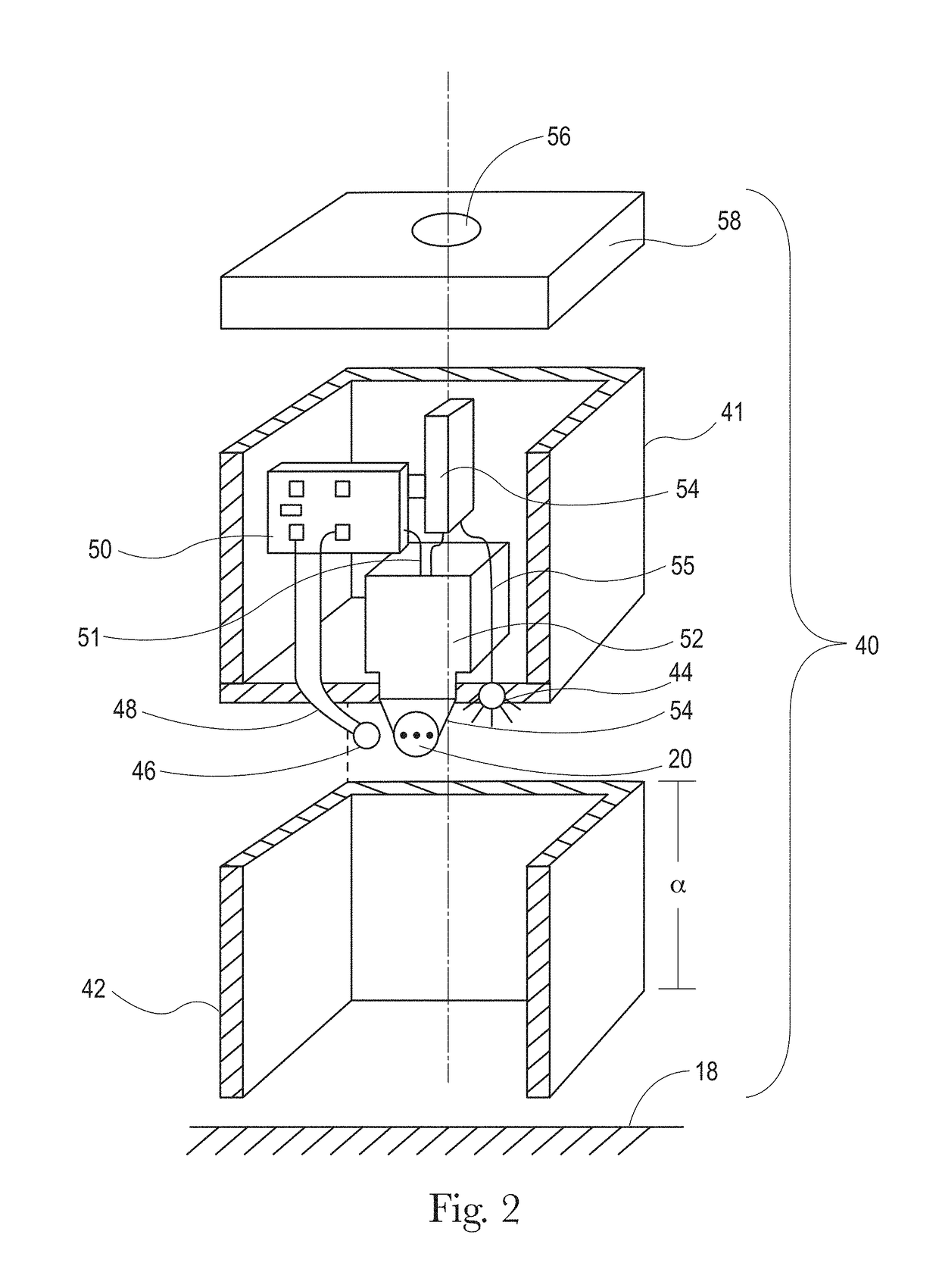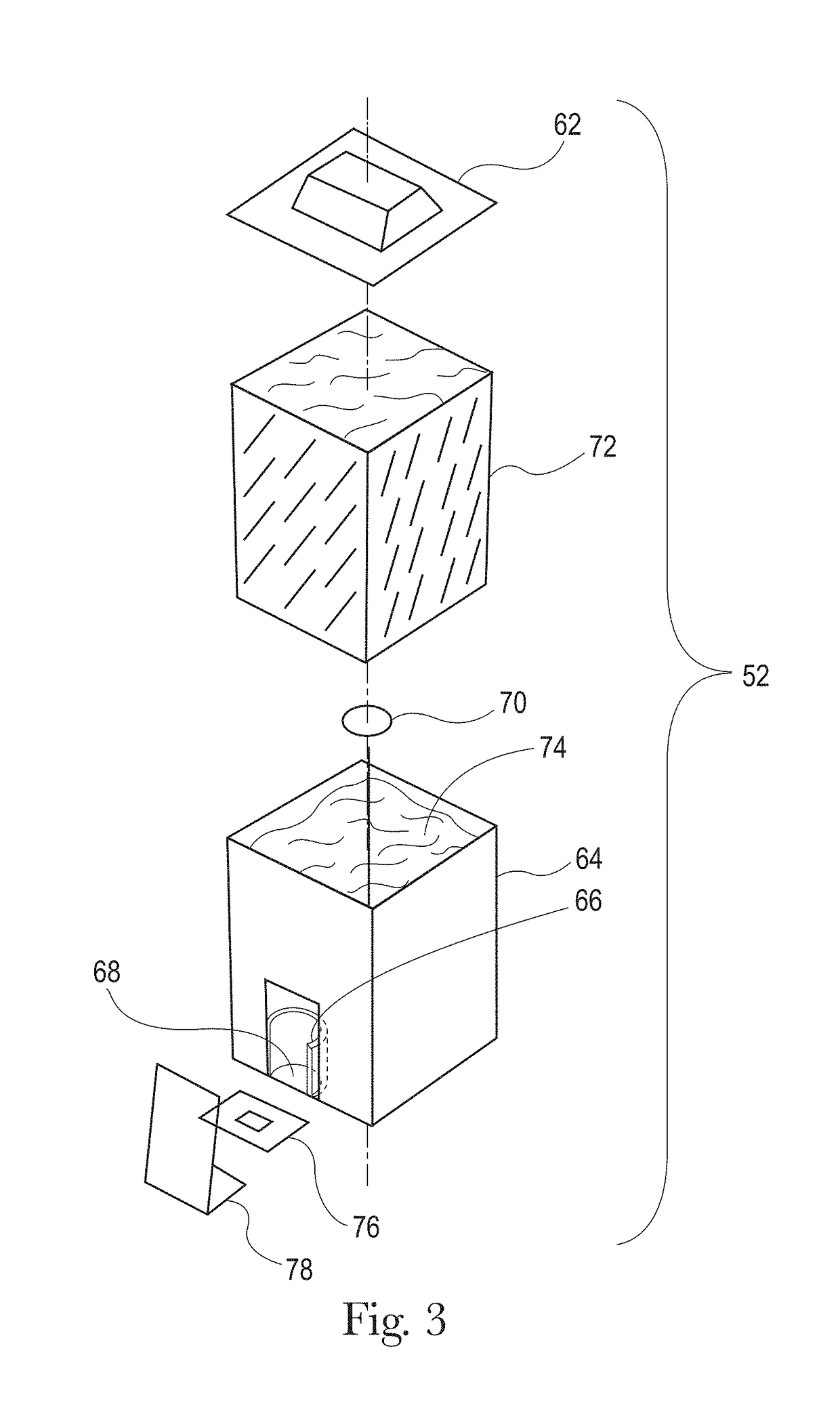Apparatus and methods for modifying keratinous surfaces
a technology of keratinous surfaces and apparatus, applied in the field of apparatus and methods for modifying keratinous surfaces, can solve the problems of speed and accuracy, and the absence of two necessary components in the device, and achieve the effects of accurate and rapid detection, rapid and rapid applicator nozzles, and rapid deviation detection
- Summary
- Abstract
- Description
- Claims
- Application Information
AI Technical Summary
Benefits of technology
Problems solved by technology
Method used
Image
Examples
example 1
Treatment Composition
[0063]
Phaseingredientdescriptionwt %AWaterwater64.80AVeegum HSMagnesium Aluminum Silicate2.00BPropylene GlycolPropylene Glycol15.00BPEG-2MPEG2M0.10CGLW45GYAP45% Iron Oxide slurry in glycerin / 0.60(yellow iron oxide)waterCGLW75PFAP-MP75% TiO2 slurry in glycerin / water15.00CPVP / VA W 73550% VP / VA Copolymer in water1.50DSymdiolHexanediol / Caprylyl glycol1.00
[0064]Combine ingredients of phase A using a homogenizer for mixing and sifting the Veegum into the water. Begin heating water to 75 C. Continue to mix for 20 min at 75 C. Then shut off heat. Combine phase B in a separate container and add to phase A with mixing while phase A cools. Add components of phase C one at a time to phase A / B while it continues to cool. When temperature reaches approximately 50 C, add phase D while continuing to mix. Mix for 2-3 minutes to ensure homogeneity then pour into container.
example 2
Treatment Composition
[0065]
Phaseingredientdescriptionwt %AWaterwater66.40AVeegum HSMagnesium Aluminum Silicate0.50BPropylene GlycolPropylene Glycol15.00BGLW45GYAP45% Iron Oxide slurry in glycerin / 0.60(yellow iron oxide)waterBGLW75PFAP-MP75% TiO2 slurry in glycerin / water15.00BPVP / VA W 73550% VP / VA Copolymer in water1.50CSymdiolHexanediol / Caprylyl glycol1.00
[0066]Combine ingredients of phase A using a homogenizer for mixing and sifting the Veegum into the water. Begin heating water to 75 C. Continue to mix for 20 min at 75 C. Then shut off heat. Add components of phase B one at a time to phase A while it continues to cool. When temperature reaches approximately 50 C, addphase C while continuing to mix. Mix for 2-3 minutes to ensure homogeneity then pour into container.
example 3
Treatment Composition
[0067]
phaseingredientdescriptionwt %AWaterwater68.25AVeegum UltraMagnesium Aluminum Silicate0.50BPropylene GlycolPropylene Glycol13.50BSicovit Yellow100% Yellow Iron Oxide0.25Iron OxideBGLW75PFAP-MP75% TiO2 slurry in glycerin / water15.00BPVP / VA W 73550% VP / VA Copolymer in water1.50CSymdiolHexanediol / Caprylyl glycol1.00
[0068]Combine ingredients of phase A using a homogenizer for mixing and sifting the Veegum into the water. Begin heating water to 75 C. Continue to mix for 20 min at 75 C. Then shut off heat. Add components of phase B one at a time to phase A while it continues to cool. When temperature reaches approximately 50 C, add phase C while continuing to mix. Mix for 2-3 minutes to ensure homogeneity then pour into container.
PUM
| Property | Measurement | Unit |
|---|---|---|
| elastic modulus | aaaaa | aaaaa |
| elastic modulus | aaaaa | aaaaa |
| refractive index | aaaaa | aaaaa |
Abstract
Description
Claims
Application Information
 Login to View More
Login to View More - R&D
- Intellectual Property
- Life Sciences
- Materials
- Tech Scout
- Unparalleled Data Quality
- Higher Quality Content
- 60% Fewer Hallucinations
Browse by: Latest US Patents, China's latest patents, Technical Efficacy Thesaurus, Application Domain, Technology Topic, Popular Technical Reports.
© 2025 PatSnap. All rights reserved.Legal|Privacy policy|Modern Slavery Act Transparency Statement|Sitemap|About US| Contact US: help@patsnap.com



